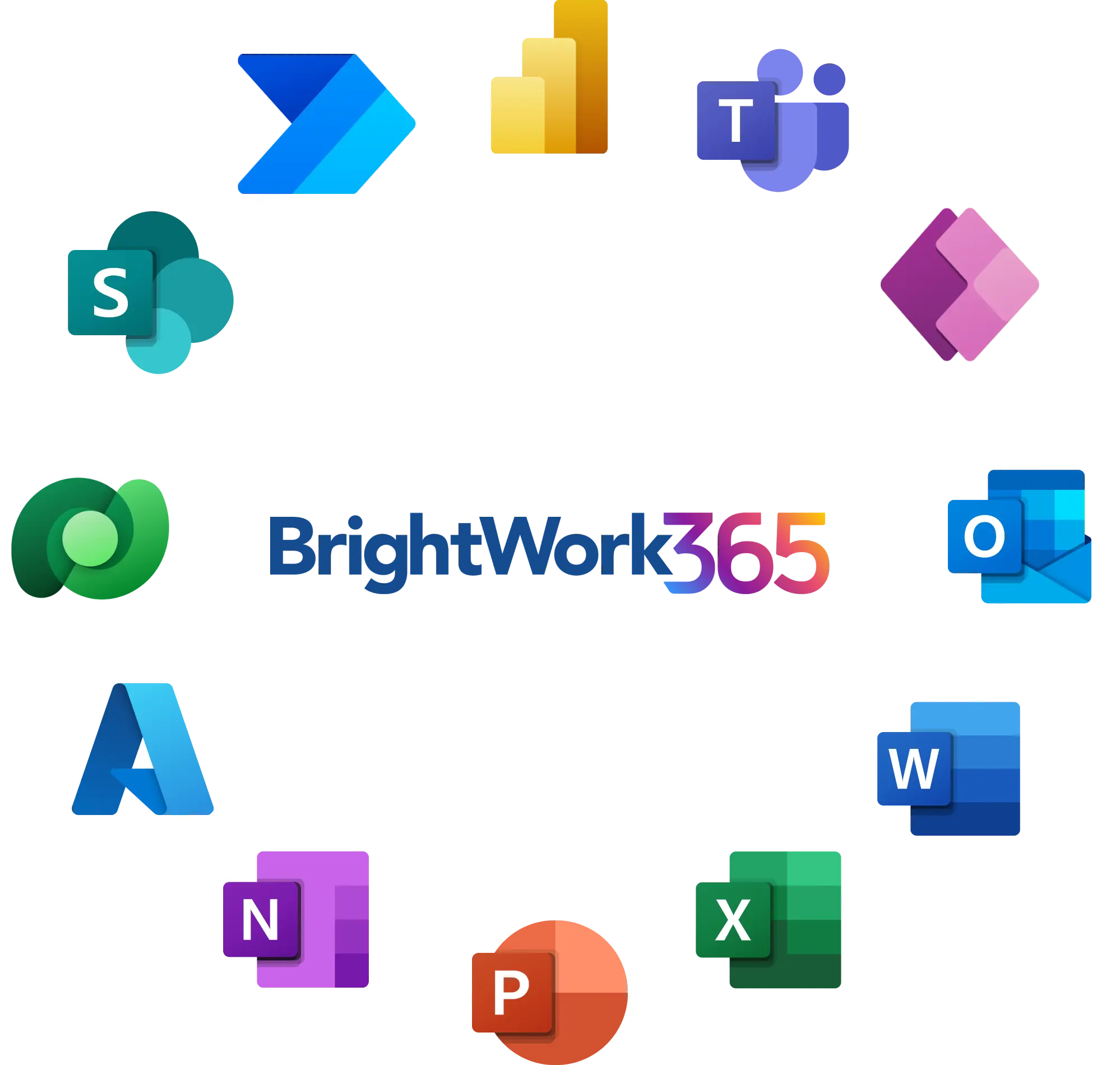Rolling out a new project management tool can feel daunting especially, when team members are comfortable with existing processes. However, without team buy-in, even the best software risks becoming underutilized. To ensure successful software implementation, organizations must approach adoption with a structured strategy focused on organizational change, leadership, training, and automation.
Standardize your project management processes with Microsoft 365
Watch a demo of BrightWork 365 project and portfolio management templates for Microsoft 365, Power Platform, and Teams.

Effective Change Management Accelerates Team Adoption
Introducing a new project management tool is not just a technical upgrade – it’s a cultural shift. Effective IT change management ensures teams transition smoothly, minimizing resistance and accelerating adoption. By clearly communicating the benefits of a tool like BrightWork 365, project leaders can align employees with the organization’s vision and highlight how the software supports project success.
A structured approach to change management in project management helps teams move from uncertainty to confidence, creating a positive environment where new tools are embraced rather than resisted.
Change Management Framework for Project Teams
A well-defined change management framework provides a roadmap for adoption, addressing the “what’s in it for me?” question every team member asks. By involving employees early, listening to feedback, and celebrating milestones, organizations can foster trust and ownership. This structured approach ensures that software adoption feels like an opportunity to improve – not a disruption.
Strong Leadership Drives Successful Tool Adoption
Leadership plays a critical role in shaping how teams perceive and use new project management tools. Leaders set the tone for collaboration and ensure employees feel supported throughout the transition.
By adopting the right leadership styles in project management, managers can demonstrate effective leadership strategies that motivate teams, reinforce commitment to the new tool, and encourage long-term adoption.
Improving Team Communication
Clear, consistent communication is key to overcoming resistance. Leaders should articulate the purpose of the new tool, set expectations, and regularly reinforce how the software helps individuals and the organization. Open forums for questions and feedback further build trust and transparency – critical elements of enhancing employee engagement.
Employee Engagement Framework
When employees feel included in the rollout process, they are more likely to adopt and champion the tool. A structured framework for employee onboarding and engagement featuring workshops, surveys, and recognition programs ensures team members feel valued and supported during the transition.
Targeted Training Empowers Teams to Embrace New Tools
Employee training is often the difference between reluctant adoption and enthusiastic usage. Without proper project management training, employees may default to old habits or underuse the software. Structured programs provide confidence and competence, reducing resistance and improving productivity.
Role-Based Training for Project Management Teams
Not every team member needs the same training. Role-based training tailors instruction to specific responsibilities, ensuring project managers, executives, and team members learn what’s most relevant. This targeted approach accelerates adoption and reduces frustration.
Best Practices for Onboarding Teams to a New Project Tool
Successful onboarding is about more than a one-time session. Effective strategies include guided walkthroughs, peer mentoring, and software onboarding checklists. Providing accessible project management 101 training ensures that all team members adapt quickly and effectively regardless of experience.
Ongoing Training for Long-Term Tool Adoption
Adoption doesn’t end after rollout. Continuous learning programs, refresher sessions, and advanced workshops keep teams engaged. This ongoing employee training ensures the tool remains a central part of project execution.
Automation Improves Project Tool Adoption and Collaboration
Automation reduces friction, making it easier for teams to embrace new tools. By streamlining repetitive tasks and improving collaboration, automation demonstrates immediate value to employees, encouraging long-term use.
Automation is also a key component of project management automation, helping teams save time and focus on meaningful work.
Process Automation for Efficiency
Automating routine tasks such as status updates, reminders, and approvals reduces manual effort and frees up time for strategic work. This type of process automation improves productivity and enhances user satisfaction with the new tool.
Digital Transformation Initiatives
When part of a broader digital transformation strategy, a project management tool becomes more than software it becomes a driver of organizational growth. Aligning the tool with strategic objectives accelerates adoption across teams and departments.
Project Collaboration Tools for Teams
Collaboration is at the heart of successful projects. Integrated project collaboration features such as shared dashboards, task assignments, and real-time updates make teamwork seamless. Modern project collaboration tools simplify coordination, build accountability, and enhance cross-functional teamwork.
Ensure Long-Term Adoption Success with BrightWork 365
Adoption is not a one-time event – it’s a long-term commitment to continuous improvement. By combining organizational change, leadership, training, and automation, businesses can create a strong foundation for successful tool implementation.
With BrightWork 365, teams gain a scalable, flexible solution designed to drive team collaboration and efficiency. Interested in seeing how it works in action?
Manage Projects with Microsoft 365, Power Platform, and Teams
Collaborate seamlessly from anywhere, with BrightWork 365 and Microsoft Teams.

